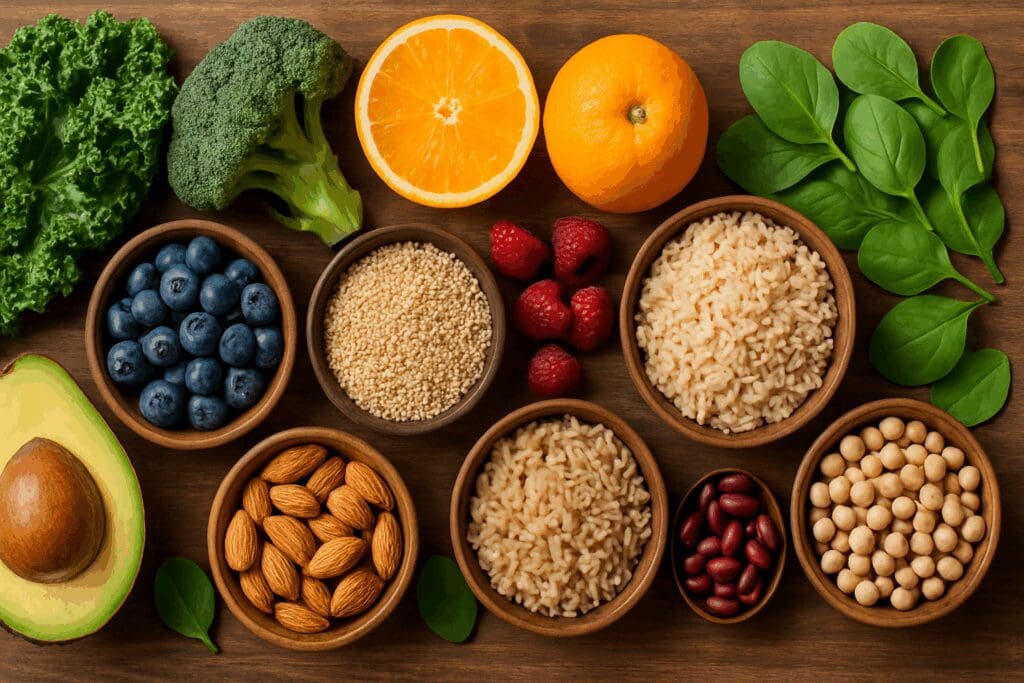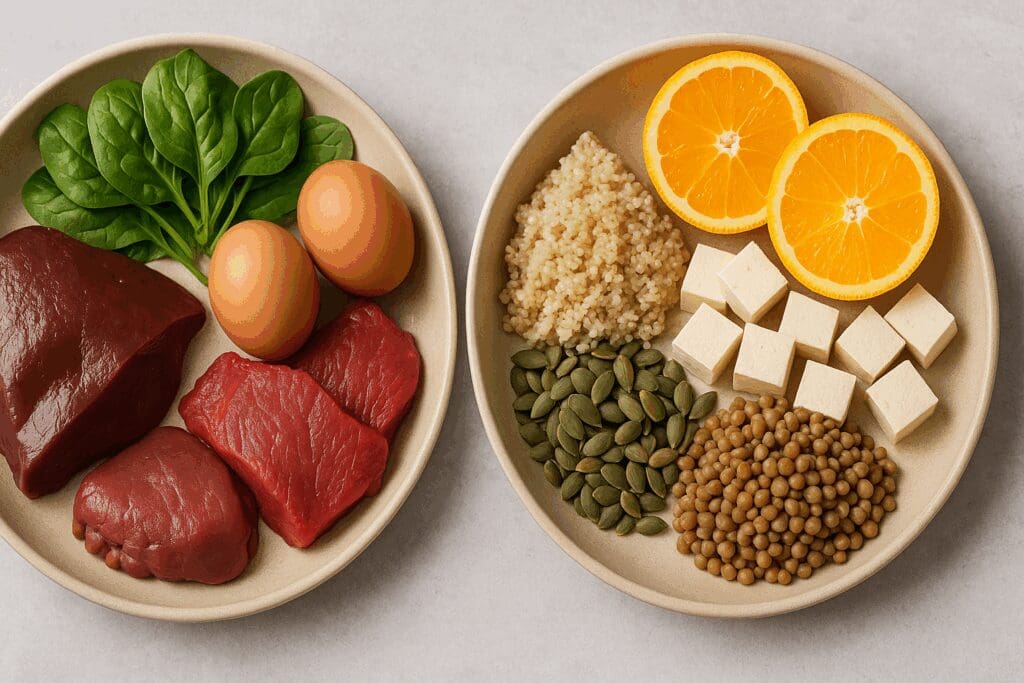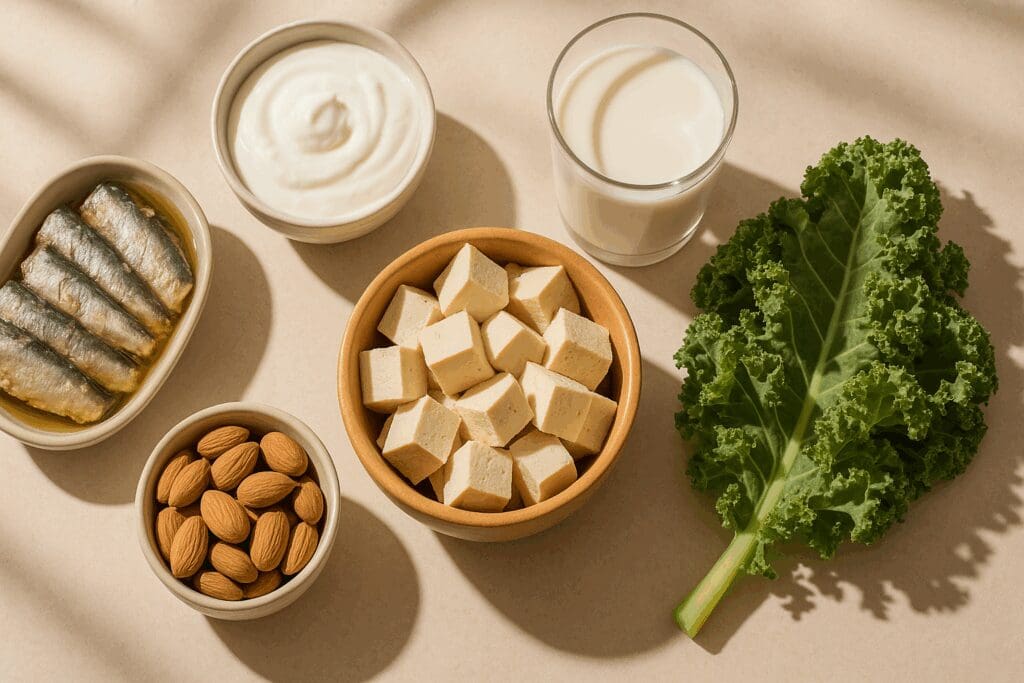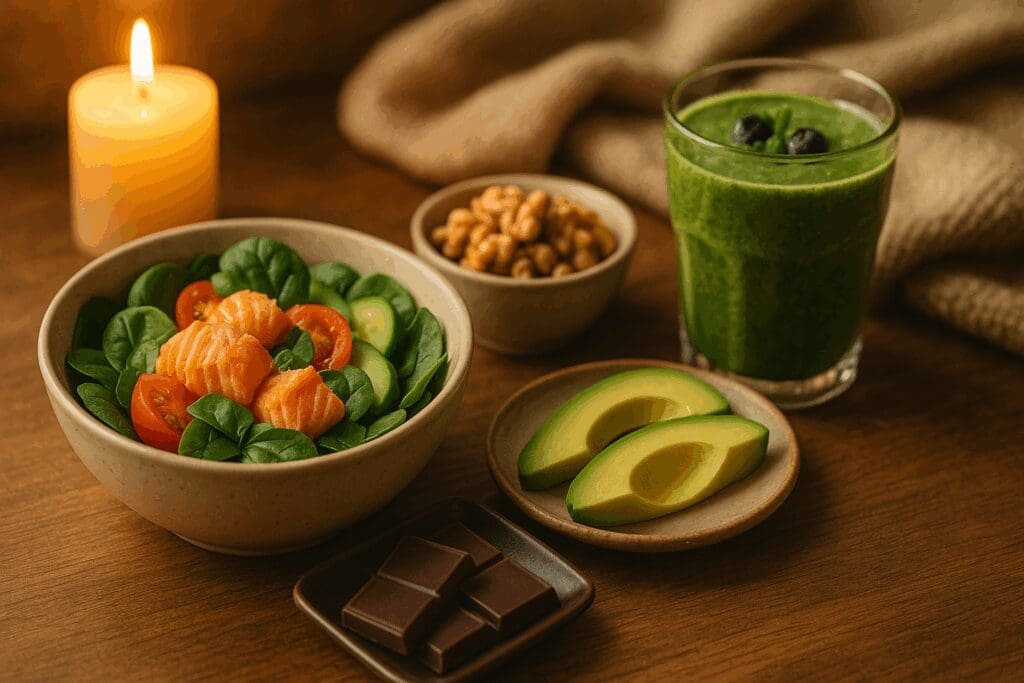Nourishing Wellness: Introduction to Healthy Food for Ladies
The pursuit of optimal health and vitality begins with the daily decisions we make at the dining table. For women, whose nutritional needs shift across different life stages—from adolescence and childbearing years to menopause and beyond—making informed dietary choices is both empowering and essential. Embracing a lifestyle that prioritizes healthy food for ladies can significantly enhance energy levels, hormonal balance, immunity, and mental clarity. But beyond just eating “right,” it’s about selecting foods that fuel the female body with purpose, honoring its complex rhythms and supporting long-term wellness goals.
Food is far more than fuel. It is chemistry in motion, a dynamic interplay of nutrients that influence every system in the body. When women align their dietary choices with their unique biological needs, they can prevent chronic disease, reduce fatigue, support reproductive health, and enjoy a more vibrant quality of life. With so much nutritional advice floating through media channels, however, it becomes imperative to distinguish gimmicks from grounded guidance. This article explores ten essential, research-based strategies to help women make empowered food choices that sustain energy, balance hormones, and promote holistic well-being.
Understanding the science of a balanced diet for women means looking beyond calorie counts or macronutrient ratios. It means understanding how certain foods influence estrogen levels, bone density, cognitive performance, and metabolic function. A truly healthy diet for females considers not just what to eat but when and how to eat. And while there is no one-size-fits-all female diet, evidence shows that prioritizing whole foods, rich in micronutrients and phytochemicals, has consistently positive outcomes.
In this comprehensive guide, we’ll cover practical, sustainable, and medically accurate nutrition tips specifically tailored for women. From identifying the best foods for women to eat to mastering energy-boosting meal planning, each insight is crafted to support informed decision-making and daily vitality. Whether you’re a college graduate balancing a demanding schedule or a busy professional juggling multiple roles, this article provides a pathway to nourishing your body with wisdom and intentionality.
You may also like: 7 Great Superfoods To Bring Out Your Best Physical Health And Mental Sharpness

Prioritize Whole, Nutrient-Dense Foods for Foundational Health
Whole foods are the cornerstone of any effective wellness plan, especially when constructing a healthy diet for female energy and hormonal health. Unlike processed options that are often stripped of fiber, vitamins, and minerals, whole foods provide a rich matrix of nutrients that work synergistically to support cellular repair, brain function, and metabolic stability. For women, who may be more vulnerable to iron deficiency, osteoporosis, or hormonal imbalances, the nutrient density of food becomes even more critical.
Integrating whole grains like quinoa, brown rice, and oats into daily meals delivers long-lasting energy through complex carbohydrates, along with vital B vitamins needed for mood and energy regulation. Leafy greens such as spinach and kale not only contribute fiber but also offer folate and magnesium—two nutrients that support reproductive and neurological function. Legumes, nuts, seeds, and fresh fruits add antioxidants and plant-based proteins, essential for tissue repair and immune resilience.
Whole foods are also pivotal in helping regulate appetite and blood sugar. Unlike their refined counterparts, they slow the absorption of glucose, reducing insulin spikes and energy crashes. This is particularly important in the context of a woman eating healthy while managing hormonal fluctuations throughout the menstrual cycle or during perimenopause. Choosing foods in their natural state minimizes hidden sugars and sodium, which can exacerbate inflammation and water retention.
It is equally important to vary the types of whole foods consumed to ensure broad-spectrum nutrient intake. Colorful vegetables like bell peppers, carrots, beets, and purple cabbage offer unique phytonutrients that protect cells from oxidative damage. These compounds, including flavonoids and carotenoids, are being studied for their potential to support breast health and reduce the risk of chronic illness. Rather than sticking to a repetitive menu, women should aim to “eat the rainbow” daily.
By making whole, nutrient-dense foods the foundation of every meal, women not only improve energy and physical performance but also enhance emotional well-being. This habit lays the groundwork for long-term health and serves as a buffer against disease, stress, and fatigue. It is a sustainable, enjoyable strategy for anyone committed to thriving through nutrition.

Understand the Power of Protein in the Female Diet
Protein plays a critical role in every physiological process, and its importance in a woman’s diet cannot be overstated. From supporting lean muscle mass and metabolic function to aiding in hormone synthesis and immune response, protein is a dietary pillar that deserves close attention. Despite its importance, many women—particularly those following plant-based diets—fall short of meeting their daily protein needs, leading to fatigue, reduced stamina, and impaired recovery.
Unlike carbohydrates, which are often quickly metabolized, protein has a more sustained impact on satiety and energy balance. When included in breakfast, for instance, it can prevent mid-morning energy crashes by moderating blood sugar and supporting neurotransmitter production. Greek yogurt, eggs, cottage cheese, tofu, tempeh, legumes, and lean meats are all excellent choices that provide both high-quality protein and micronutrients like iron, zinc, and B12—all of which are vital for women’s reproductive and cognitive health.
Women who are physically active or approaching menopause may need even more protein to preserve muscle mass and prevent sarcopenia. As estrogen levels decline with age, the body becomes less efficient at protein synthesis, making it even more important to prioritize protein-rich meals. Furthermore, pairing protein with healthy fats and complex carbohydrates helps optimize nutrient absorption and promotes a more balanced glycemic response—essential for sustained energy.
Protein also plays a central role in female hormonal health. Amino acids, the building blocks of protein, are used to produce neurotransmitters like serotonin and dopamine, which influence mood and cognitive function. This connection is particularly meaningful for women who experience mood swings related to PMS, perimenopause, or postpartum hormonal shifts. Ensuring sufficient protein intake can help stabilize mood and improve focus.
Finally, diversifying protein sources ensures a richer array of nutrients. Incorporating both animal-based and plant-based options allows for flexibility and increased fiber, antioxidants, and phytoestrogens—plant compounds that can support hormone balance in women. A healthy diet for female vitality must treat protein not as a side note, but as an essential nutrient deserving of strategic, consistent inclusion.

Focus on Iron-Rich Foods to Combat Fatigue and Anemia
Iron is one of the most commonly deficient nutrients in women, particularly in premenopausal individuals. The monthly blood loss associated with menstruation, coupled with increased needs during pregnancy or athletic training, puts women at greater risk for iron deficiency and anemia. Choosing iron-rich foods is essential for maintaining energy, supporting oxygen transport, and preventing chronic fatigue—a key priority in any balanced diet for women.
Heme iron, found in animal products like red meat, poultry, and fish, is more readily absorbed by the body than non-heme iron, which comes from plant-based sources. However, vegetarian and vegan women can still meet their needs through strategic meal planning. Foods like lentils, black beans, chickpeas, quinoa, tofu, and fortified cereals can provide ample non-heme iron, especially when consumed with vitamin C-rich fruits like oranges, strawberries, or bell peppers, which enhance absorption.
Iron is also critical for cognitive function and immune strength. Inadequate levels can lead to brain fog, reduced memory, and increased susceptibility to illness—all of which compromise a woman’s quality of life. The best foods for women to eat during menstruation or recovery from illness are those that replenish iron stores while offering other supportive nutrients like folate, copper, and B6.
Women who experience heavy periods, are pregnant, or follow plant-based diets should consider regular blood tests to monitor ferritin and hemoglobin levels. While food should be the first line of defense, supplements may be necessary in cases of deficiency—ideally under the guidance of a healthcare provider. It’s important to avoid self-prescribing iron, as excess amounts can lead to toxicity and digestive discomfort.
Creating iron-rich meals doesn’t have to be complicated. A salad with spinach, chickpeas, pumpkin seeds, and citrus dressing, or a breakfast bowl with fortified oats, walnuts, and sliced kiwi, offers both function and flavor. By weaving iron-rich choices into daily meals, women can reduce the risk of anemia, improve vitality, and sustain peak performance throughout the day.

Healthy Food for Ladies to Support Hormonal Balance Naturally
Hormones govern virtually every aspect of a woman’s health, from menstrual regularity and fertility to mood and metabolism. Because of this, it is essential that women understand how diet can either support or disrupt hormonal harmony. Choosing healthy food for ladies that naturally stabilizes endocrine function can help mitigate symptoms of PMS, perimenopause, and even conditions like PCOS and endometriosis. While no single food will act as a cure-all, a diet rich in specific nutrients can create a biochemical environment that supports balanced hormones over time.
Healthy fats play a particularly vital role in hormone production. Omega-3 fatty acids—found in fatty fish like salmon, mackerel, and sardines, as well as in flaxseeds, walnuts, and chia seeds—support anti-inflammatory pathways and influence the synthesis of estrogen and progesterone. These fats are also associated with improved mood and reduced menstrual pain. For women struggling with hormonal acne or irregular cycles, focusing on anti-inflammatory, omega-rich foods can make a meaningful difference.
Fiber is another crucial ally for hormonal health. Found abundantly in whole grains, legumes, fruits, and vegetables, fiber binds to excess estrogen in the digestive tract and helps eliminate it from the body. This process prevents estrogen dominance, a condition that can exacerbate PMS, fibroids, and weight gain. Cruciferous vegetables like broccoli, cauliflower, and Brussels sprouts are particularly beneficial due to their content of indole-3-carbinol, a compound that supports estrogen metabolism in the liver.
Incorporating fermented foods such as kimchi, sauerkraut, yogurt, and kefir also plays a role in regulating hormones. A healthy gut microbiome assists in detoxifying hormones and producing short-chain fatty acids that influence inflammation and insulin sensitivity. These gut-related mechanisms are critical for supporting stable mood, appetite, and energy—especially important for a woman eating healthy to manage stress and productivity.
Finally, consistency matters. Hormonal health is influenced by patterns more than isolated choices. A woman’s diet should support stable blood sugar throughout the day, avoiding long periods without food that can stress the adrenal glands and elevate cortisol. Balanced meals with protein, healthy fats, and fiber-rich carbs every 3–4 hours help maintain endocrine stability and reduce cravings. By integrating these hormone-supportive foods into everyday meals, women can experience more predictable cycles, clearer skin, better mood, and a more resilient metabolism.
Boost Energy with Smart Carbohydrate Choices
Carbohydrates have long suffered from a misguided reputation in diet culture, often blamed for weight gain or energy crashes. Yet, they remain a vital macronutrient—especially for women—when chosen wisely and consumed in appropriate portions. Carbohydrates are the body’s preferred source of energy, fueling everything from mental focus to physical performance. Understanding how to select the best carbohydrates is essential to any healthy diet for female vitality.
Complex carbohydrates like sweet potatoes, brown rice, oats, and legumes offer slow-digesting fuel that keeps energy levels stable throughout the day. Unlike refined sugars and white flour, which lead to insulin spikes and crashes, these foods provide a steady release of glucose into the bloodstream. This is particularly important for women managing hormonal fluctuations that affect insulin sensitivity, such as during the luteal phase of the menstrual cycle or in cases of PCOS.
Carbohydrates are also crucial for thyroid function. The thyroid is responsible for regulating metabolism, and adequate carbohydrate intake supports the conversion of inactive thyroid hormone (T4) into its active form (T3). When women overly restrict carbs—especially in low-carb or keto-style diets—they may experience fatigue, hair thinning, irregular cycles, or cold intolerance. This is a subtle but significant example of how the best foods for women to eat often depend on physiological context rather than one-size-fits-all trends.
Pairing carbohydrates with protein and healthy fats further enhances their benefits by slowing digestion and reducing cravings. A breakfast of oatmeal with almond butter and berries, for instance, not only energizes but also provides antioxidants, fiber, and satiety. Likewise, using whole grain bread topped with avocado and poached eggs makes for a balanced, energizing lunch. These combinations support not only stable blood sugar but also mental clarity and emotional regulation.
Carbohydrates are also deeply connected to serotonin production. This neurotransmitter, which influences mood, sleep, and stress tolerance, is partly synthesized from the amino acid tryptophan—with carbohydrate intake facilitating its passage into the brain. For women navigating PMS or postpartum mood changes, smart carbohydrate choices can be a powerful dietary tool to promote emotional resilience and energy.
Hydration and Electrolytes: The Unsung Heroes of Women’s Energy
While much attention is given to macronutrients and vitamins, hydration remains one of the most overlooked elements of a woman’s wellness strategy. Water comprises more than half the human body and influences everything from temperature regulation to nutrient transport. For women, maintaining hydration is especially vital during menstruation, pregnancy, exercise, and periods of high stress—all of which can lead to increased fluid loss and electrolyte imbalance.
Dehydration—even at mild levels—can lead to symptoms that mimic more serious health issues: headaches, fatigue, brain fog, and mood swings. These symptoms often occur long before thirst is perceived, making regular, proactive hydration a non-negotiable aspect of a woman eating healthy and staying energized. Water also supports healthy digestion, skin elasticity, joint lubrication, and kidney function—key elements of daily vitality and long-term health.
Electrolytes such as potassium, sodium, calcium, and magnesium are essential in maintaining fluid balance and muscle function. Women who exercise frequently or live in hot climates should be particularly mindful of replacing electrolytes through foods like bananas, leafy greens, citrus fruits, and coconut water. Over-reliance on sugary sports drinks, however, can undermine the benefits of rehydration by introducing excess calories and preservatives.
Coffee and tea, while hydrating to a degree, have mild diuretic effects and should be balanced with additional water intake. Herbal teas like peppermint, ginger, and chamomile offer hydration with the added benefits of anti-inflammatory properties and digestive support—especially helpful during menstruation or pregnancy. Starting the day with a glass of lemon water or ending it with an herbal infusion can support metabolism and relaxation.
For those who struggle with plain water, infusing it with slices of cucumber, citrus, or berries can enhance palatability while contributing antioxidants. Broth-based soups, smoothies, and high-water-content fruits like watermelon or cucumbers also contribute to overall hydration. In the context of a healthy food for ladies approach, hydration is not simply about drinking water but about sustaining cellular health, reducing fatigue, and enhancing mental and physical performance.

Healthy Food for Ladies to Support Bone Density and Vitality
As women age, bone density becomes a central concern—particularly after the age of 30, when bone mass typically peaks, and even more so after menopause, when estrogen declines can accelerate bone loss. Without adequate nutrition, women are at heightened risk of osteoporosis and fractures. Therefore, incorporating healthy food for ladies that supports strong bones is a key investment in lifelong vitality and mobility.
Calcium is perhaps the most well-known bone-building mineral, but it does not work in isolation. Vitamin D, magnesium, and vitamin K2 are equally essential in promoting calcium absorption and directing it to the bones rather than soft tissues. Dairy products like yogurt and kefir offer bioavailable calcium, while sardines and leafy greens provide not only calcium but also complementary nutrients such as phosphorus and potassium.
Plant-based women can obtain calcium from tofu, almonds, fortified plant milks, and sesame seeds, though attention must be paid to bioavailability. It’s also vital to balance calcium intake with magnesium and vitamin D. Magnesium, found in pumpkin seeds, spinach, and legumes, supports bone remodeling, while vitamin D—synthesized from sunlight and found in fatty fish—facilitates calcium absorption in the gut. Without sufficient levels of these synergistic nutrients, calcium supplementation alone may fall short.
Weight-bearing exercise, such as walking, strength training, and yoga, further enhances bone density by signaling the body to deposit minerals where needed. However, exercise without proper nutrition may not yield full benefits. A comprehensive female diet that includes adequate protein and anti-inflammatory fats supports the structural matrix of bones and reduces oxidative stress that can weaken bone tissue over time.
Soy-based foods like tempeh and edamame contain isoflavones—plant estrogens that may support bone health during menopause. Though research is still evolving, these compounds show promise in mitigating bone loss by mimicking some of the protective effects of estrogen. This represents another example of how woman food choices can be tailored to life stage and health status for maximum benefit.
Supporting bone density through diet is not just about avoiding osteoporosis later in life. It’s about empowering women to remain active, agile, and strong through every decade. By emphasizing bone-nourishing foods daily, women invest in freedom of movement, reduced injury risk, and greater independence as they age.
Embrace Antioxidant-Rich Foods for Immune and Skin Health
Antioxidants are compounds that neutralize free radicals—unstable molecules that can damage cells and accelerate aging. For women, whose bodies are constantly adapting to hormonal changes, stressors, and environmental toxins, a diet rich in antioxidants can be a powerful defense mechanism. Incorporating these protective compounds into the daily diet not only boosts immune resilience but also contributes to radiant skin, reduced inflammation, and protection against chronic disease.
Berries are among the most antioxidant-dense foods available, with blueberries, strawberries, and raspberries offering high levels of anthocyanins, flavonoids, and vitamin C. These compounds have been shown to reduce oxidative stress and improve vascular health, making them ideal components of a healthy diet for female energy and skin support. Regular consumption of berries has also been associated with improved cognitive function, an added bonus for busy women balancing work, family, and personal wellness.
Dark leafy greens like kale, collards, and Swiss chard are loaded with lutein and zeaxanthin—carotenoids that protect the eyes and skin from UV damage. They also provide folate, which is essential for DNA repair and red blood cell formation, particularly important for women of childbearing age. Likewise, bright vegetables like carrots, bell peppers, and tomatoes contribute beta-carotene, a precursor to vitamin A, which supports immune function and skin cell turnover.
Green tea, rich in epigallocatechin gallate (EGCG), offers powerful anti-inflammatory effects and supports detoxification pathways in the liver. This is especially relevant for women concerned about hormone balance, as the liver plays a central role in metabolizing estrogen. Drinking green tea regularly can complement a woman eating healthy by adding both hydration and therapeutic benefits to her routine.
Nuts and seeds, especially sunflower seeds, almonds, and flaxseeds, are excellent sources of vitamin E, selenium, and zinc—all of which support skin elasticity, hormone production, and immune defense. Avocados also offer vitamin E alongside heart-healthy monounsaturated fats. Incorporating these antioxidant-rich foods throughout the day—in smoothies, salads, or snacks—can visibly and tangibly elevate wellness, providing beauty from the inside out.
Healthy Food for Ladies to Support Digestive and Gut Health
Digestive health is the foundation of nutrient absorption, immune regulation, and hormonal balance—all critical pillars of women’s wellness. When the gut is functioning optimally, women are better able to extract energy from food, regulate inflammation, and maintain mental clarity. However, when digestion falters, symptoms like bloating, fatigue, acne, and mood swings often emerge. Fortunately, choosing healthy food for ladies that supports the gut microbiome can significantly enhance digestive function and overall well-being.
Fiber is a key player in digestive health. Soluble fiber, found in oats, apples, carrots, and legumes, helps form a gel-like substance in the gut that slows digestion and promotes satiety. Insoluble fiber, from foods like whole wheat, cauliflower, and nuts, adds bulk to stool and promotes regular bowel movements. Together, these fibers feed beneficial gut bacteria and help eliminate waste and excess estrogen from the body.
Fermented foods provide a direct source of probiotics—live beneficial bacteria that support a healthy gut environment. Yogurt with live cultures, kefir, miso, kimchi, and sauerkraut are all rich in probiotics and can enhance digestive function, reduce bloating, and improve skin health. These foods also support the gut-brain axis, the bidirectional communication system between the gut and the brain that influences mood, focus, and sleep—especially relevant for women navigating stress or hormonal shifts.
Prebiotic foods—those that feed probiotics—are equally important. These include garlic, onions, leeks, asparagus, bananas, and chicory root. Including both prebiotics and probiotics in the diet creates a synergistic effect, promoting a balanced and diverse gut microbiota. This is foundational for a balanced diet for women, particularly those dealing with irritable bowel syndrome, autoimmune issues, or chronic fatigue.
Hydration, chewing food thoroughly, and avoiding excessive processed foods and artificial sweeteners are additional strategies that support digestive wellness. Chronic use of NSAIDs, antibiotics, or antacids may impair gut health, so it is important to use such medications judiciously and support recovery with gut-healing foods like bone broth, collagen, and L-glutamine-rich sources such as cabbage.
By prioritizing gut health, women can experience not only improved digestion but also enhanced immunity, mental clarity, and hormonal harmony. A woman eating healthy with an emphasis on digestion enjoys better energy levels, more stable mood, and resilience against stress and inflammation.

Healthy Food for Ladies to Support Mental Clarity and Mood
Mental wellness is deeply interwoven with nutrition, and for women—who may face unique challenges related to mood fluctuations, anxiety, and depression—food can serve as both medicine and maintenance. The brain, like every other organ, requires a steady supply of nutrients to function optimally. The best foods for women to eat for mental clarity are those that supply essential fatty acids, B vitamins, and antioxidants, all of which support neurotransmitter production and reduce inflammation.
Omega-3 fatty acids, particularly EPA and DHA found in fatty fish, are well-documented for their positive effects on mood and cognitive performance. These fats help build neuronal membranes, enhance communication between brain cells, and reduce the production of pro-inflammatory cytokines that have been implicated in mood disorders. Women who do not consume fish should consider algae-based omega-3 supplements or incorporate flaxseeds and walnuts for ALA, though the conversion to EPA/DHA is less efficient.
B vitamins—especially B6, B12, and folate—are crucial for neurotransmitter synthesis and the regulation of homocysteine, a compound that, when elevated, has been linked to cognitive decline and depression. Leafy greens, eggs, legumes, and nutritional yeast are excellent sources of these vitamins. A female diet lacking in B vitamins may contribute to brain fog, irritability, and low motivation, particularly during times of hormonal transition.
Magnesium, often depleted by stress, plays a role in over 300 enzymatic reactions and directly influences mood and sleep quality. Dark chocolate, pumpkin seeds, avocados, and leafy greens are rich sources of this calming mineral. Including magnesium-rich foods in the evening can support relaxation and reduce insomnia—a common issue for women dealing with perimenopausal hormone changes or high-stress lifestyles.
Foods that stabilize blood sugar also support mood stability. Sugar highs and crashes can exacerbate anxiety, fatigue, and irritability. Including protein and fiber in every meal slows the absorption of glucose and supports a more even mental state throughout the day. Likewise, hydration and limiting alcohol and caffeine intake—especially in the late afternoon—can prevent jitteriness and mental fatigue.
By feeding the brain with precision and care, women can enhance their capacity for focus, creativity, emotional resilience, and joy. Mental clarity and emotional balance begin not just with self-care practices or mindfulness, but with the daily decision to nourish the body through intentional, nutrient-dense eating.
Frequently Asked Questions About Healthy Food for Ladies: Practical Advice Beyond the Basics
1. What are some overlooked micronutrients essential for a healthy food for ladies approach?
While most nutrition advice for women highlights macronutrients like protein or healthy fats, micronutrients play a foundational role in a balanced diet for women. Iron, magnesium, and zinc are frequently overlooked but critical—iron supports menstrual health, magnesium helps with stress and sleep, and zinc promotes hormone balance and immune defense. Biotin and B-complex vitamins also influence mood regulation and energy levels, especially in women dealing with hormonal shifts during perimenopause or menopause. Including foods like pumpkin seeds, leafy greens, and lentils can fortify the female diet with these nutrients. Paying attention to micronutrient diversity ensures that a woman eating healthy food isn’t just hitting calorie goals, but optimizing her body’s long-term function.
2. How does a woman’s gut health impact her hormone balance?
Gut health and hormone regulation are deeply connected in the context of a healthy diet for female wellness. The gut microbiome plays a critical role in metabolizing estrogen and regulating inflammation, both of which are tied to PMS symptoms, fertility, and even menopause transitions. A woman eating healthy should prioritize fiber-rich plant foods, fermented options like kefir or kimchi, and prebiotics such as garlic and oats to maintain this microbiome balance. Moreover, chronic bloating, constipation, or mood swings can often be traced back to dysbiosis—an imbalance in gut bacteria—making digestive wellness a central pillar in any sustainable female diet. For women seeking the best foods for women to eat, gut-friendly meals provide benefits far beyond digestion alone.
3. What foods are good for women navigating perimenopause and menopause?
What foods are good for women in perimenopause often differ from those that benefit younger women. As estrogen levels decline, bone density and metabolic rate are affected, which means a strategic intake of calcium, phytoestrogens, and omega-3s becomes essential. Edamame, flaxseeds, chia seeds, and sardines are examples of woman food that support hormone balance and reduce inflammation. A healthy food for ladies experiencing hot flashes or mood swings might include turmeric-spiced teas or magnesium-rich dark chocolate to ease discomfort naturally. Additionally, the inclusion of vitamin D–fortified foods aids calcium absorption and supports joint health—two major concerns during midlife.
4. How can women use meal timing to optimize energy and hormonal rhythm?
Meal timing is an underused tool in the womens diet conversation. For instance, front-loading calories earlier in the day—when insulin sensitivity is higher—can help stabilize energy and blood sugar levels, reducing cravings and fatigue later on. A balanced diet for women that aligns with circadian rhythm might involve a protein-rich breakfast, a fiber-dense lunch, and a lighter, early dinner to support better sleep and cortisol regulation. This approach is especially helpful for a woman eating healthy who struggles with energy crashes or mood dips in the afternoon. Meal timing can work synergistically with nutrient choices to enhance productivity, hormonal alignment, and emotional steadiness.
5. How can plant-based diets meet female-specific nutritional needs?
While plant-based eating is increasingly popular, ensuring a complete healthy diet for female bodies requires strategic planning. Key nutrients such as vitamin B12, iron, and omega-3s must be prioritized through fortified foods or targeted supplements. A woman eating healthy food on a vegan or vegetarian diet should include spirulina, quinoa, nutritional yeast, and algae-based DHA to support brain, blood, and hormonal function. Diversity is key: rotating legumes, grains, seeds, and greens not only reduces dietary boredom but ensures comprehensive nutrient intake. As plant-forward lifestyles grow, they remain a viable source of the best foods for women when executed mindfully.
6. How does emotional well-being influence a woman’s food choices?
Emotional health profoundly impacts a woman’s nutritional patterns. Stress, anxiety, and hormonal shifts can prompt cravings for sugar and processed foods, undermining the goals of a healthy food for ladies regimen. Mindful eating practices—such as eating without distractions, tracking emotional triggers, and practicing gratitude—can shift the female diet away from reactionary choices and toward nourishment. Moreover, foods like salmon, blueberries, and probiotic yogurt not only support physical health but boost serotonin and reduce cortisol. Understanding this emotional-food connection is essential in creating a sustainable and psychologically supportive womens diet.
7. Why should cultural and ancestral eating patterns be considered in a female diet?
Generic diet plans often overlook the cultural context of eating, which can undermine consistency and satisfaction. Embracing traditional dishes—from lentil stews in South Asia to West African leafy greens or Mediterranean-style grilled fish—can help a woman eating healthy stay committed without sacrificing cultural identity. These dishes often align naturally with the principles of a balanced diet for women, offering anti-inflammatory ingredients, slow-digesting carbs, and heart-healthy fats. Recognizing ancestral eating habits also supports gut flora diversity and nutrient bioavailability, enhancing digestion and hormonal health. Tailoring a healthy diet for female needs doesn’t mean abandoning heritage—it means refining it.
8. What are the long-term cognitive benefits of eating healthy for women?
A growing body of evidence links a healthy food for ladies approach with long-term cognitive preservation. Diets high in polyphenols, omega-3 fatty acids, and antioxidants have been shown to reduce the risk of Alzheimer’s and cognitive decline, which disproportionately affect women. Including woman food like wild-caught salmon, blueberries, walnuts, and dark leafy greens helps build neurological resilience. When a woman eating healthy prioritizes brain-supportive nutrients early, she supports memory, learning capacity, and emotional balance decades down the line. Mental clarity and cognitive vitality are not just short-term bonuses but lifelong dividends of a smart female diet.
9. How can busy lifestyles accommodate a healthy food for ladies strategy?
Modern life often disrupts the best intentions behind a healthy diet for female wellness. However, meal prepping on weekends, using batch-cooked grains, and storing freezer-friendly smoothies can make the womens diet easier to maintain. Quick staples like canned chickpeas, pre-washed greens, hard-boiled eggs, and plain Greek yogurt can form the backbone of the best foods for women to eat on a tight schedule. A woman eating healthy food doesn’t need hours in the kitchen—just a few smart systems and a commitment to convenience without compromise. Tech tools like meal planning apps or grocery subscription services can also provide consistent support.
10. What future innovations might shape how women eat for health?
Emerging trends in personalized nutrition—such as microbiome testing, nutrigenomics, and wearable nutrient trackers—are redefining what foods are good for women on an individual basis. In the next decade, healthy food for ladies may become even more tailored, with diet plans adapting to menstrual cycles, genetic markers, and even real-time stress data. Lab-grown proteins and functional foods engineered to support hormone health may further optimize the female diet. As research advances, a woman eating healthy may no longer rely solely on food groups but also on bio-individual metrics. This precision approach promises not just generalized wellness, but peak personal performance and longevity.
Conclusion: Nourishing the Whole Woman Through Food
A healthy diet for female well-being is not defined by fleeting trends or rigid rules, but by mindful, science-informed choices that honor the complexities of the female body. From balancing hormones and supporting bone density to energizing the mind and fortifying the gut, each of the ten strategies explored in this guide demonstrates how powerful food can be when used as a tool for healing and empowerment.
Choosing healthy food for ladies is not just about appearance or weight control—it is about cultivating strength, stability, and vitality from within. It is a form of self-respect, a daily affirmation that a woman’s body deserves the best fuel available. With each nutrient-rich meal, women take command of their health narrative, investing in longevity, energy, and quality of life.
The path to wellness is rarely linear. There will be moments of indulgence, experimentation, and evolution. What matters most is consistency and the willingness to listen to the body’s needs. By embracing a whole-food, balanced diet for women that evolves through the seasons of life, women can support optimal health at every stage—from menstruation to menopause and beyond.
Let the knowledge in this article serve as both foundation and inspiration. A woman eating healthy food today is not just preventing disease—she is crafting a life of vibrance, clarity, and purpose. Whether through mindful protein choices, bone-nourishing greens, or brain-boosting omega-3s, the best foods for women to eat are those that affirm her vitality and sustain her dreams. And in that daily act of nourishment, wellness becomes not just a goal—but a lived, joyful experience.



